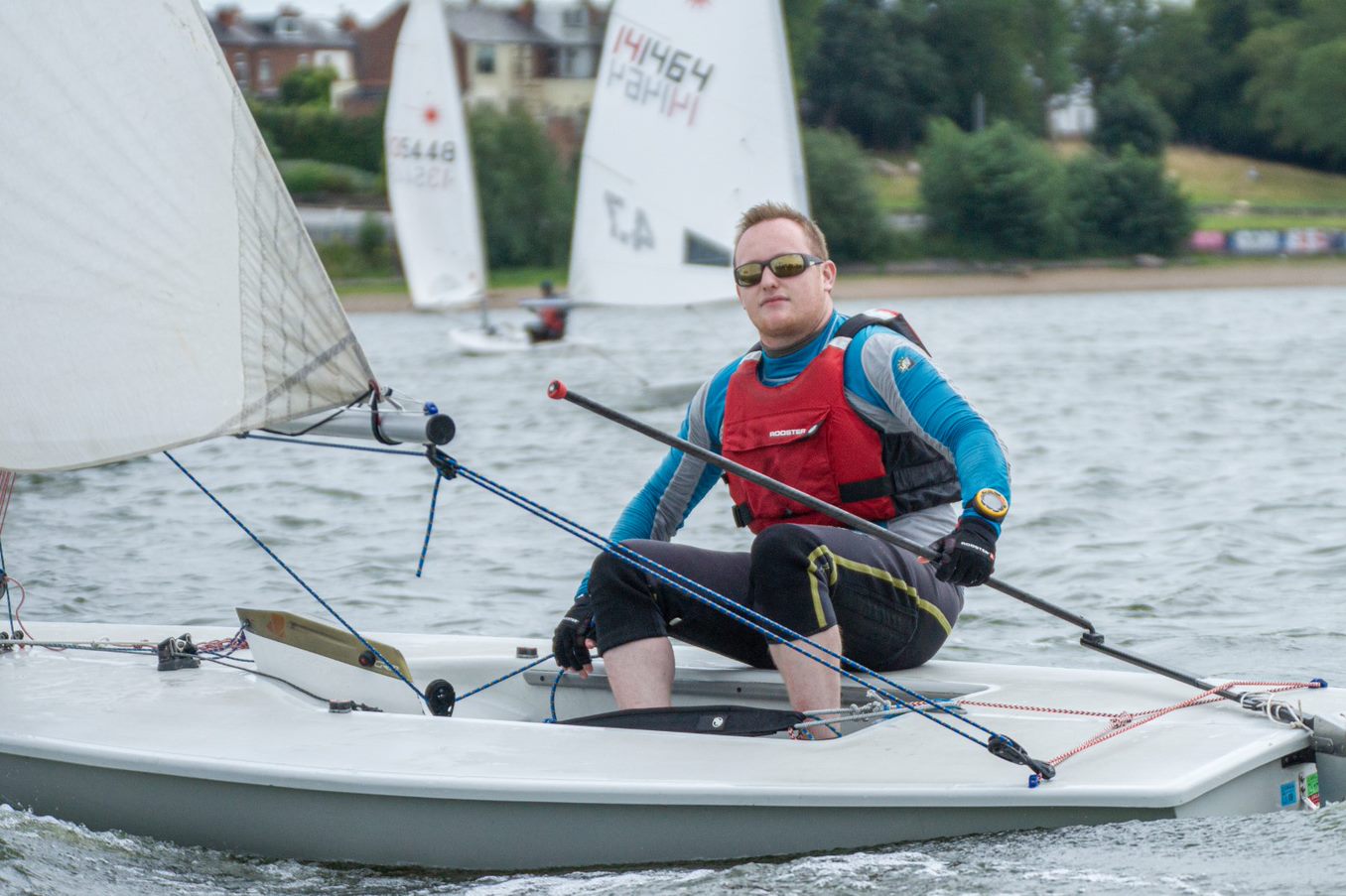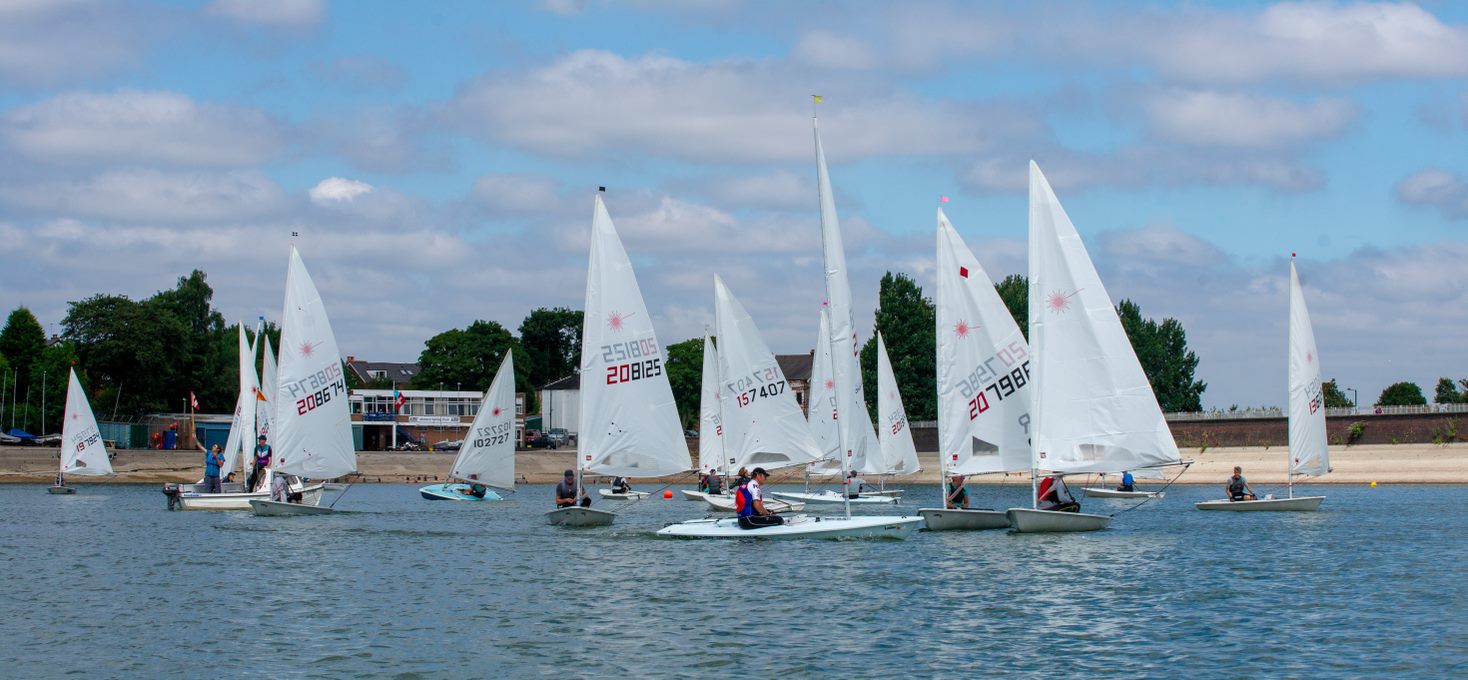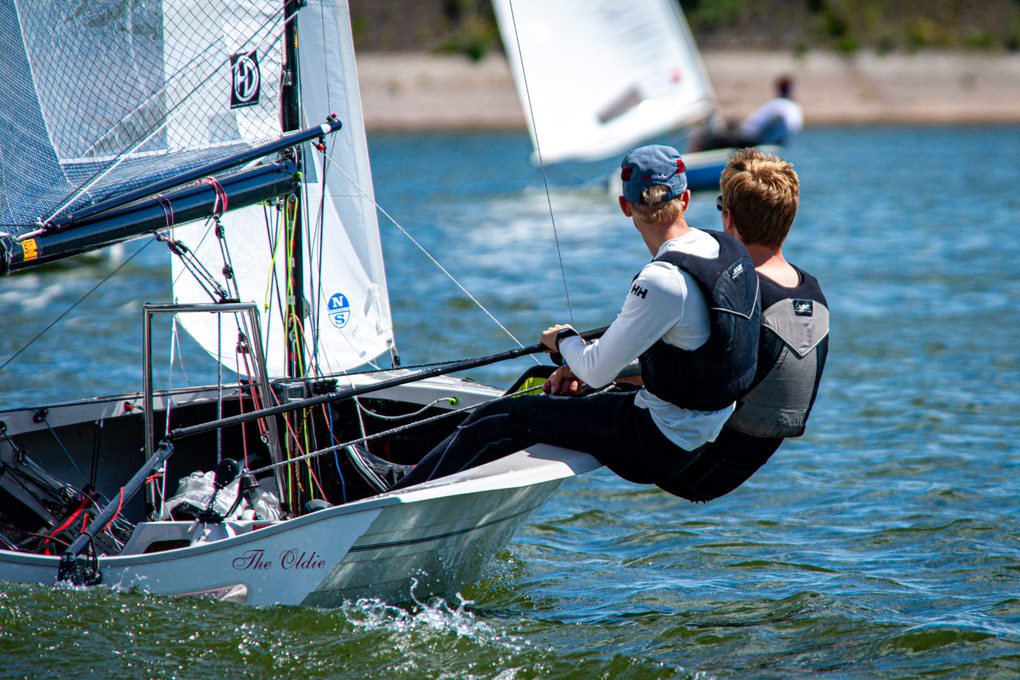Advice for beginners
What not to wear for sailing lessons
What to wear for a sailing lessons and dinghy sailing – some notes to help new sailors choose the right kit.
With our sailing lessons we try to give all our Start Sailing/Basic Skills trainees good basic advice about what to wear to stay warm and dry. When it comes to buying the right kit for the right conditions, the choices can be bewildering. Wetsuit or drysuit? Which manufacturer? They all claim some unique features. Where to buy? There are now very few places where you can try stuff on – most is now internet/mail order, so before you start your sailing lessons do some searches online.
The following notes originated in a discussion on the Club’s Yahoo!group forum about what to wear through the winter, but is relevant to all seasons. On the following websites it should be obvious which kit is suitable for summer use, and which is for more extreme conditions.
You don’t have to spend a fortune to sail comfortably, and you do need to have an idea of priorites. Don’t rush your spending decisions.
There’s a bewildering choice, and it all comes down to finding a combination that you feel is good VFM and suits your sailing style. If you’re new to sailing, then you’ll notice what the instructors and other sailors are wearing, and no-one will mind you asking for their opinions on the suitability of their choices.
If in any doubt, please ask for advice.
David Homer
Snr Instructor
07791 964 189

Where to buy?
Birmingham Dinghy Services
New chandlery, Birmingham Dinghy Services, is a dinghy workshop and chandlery specialising in Gul apparel, run by renowned Merlin sailor and nice guy Matt Biggs. The chandlery is located on a site shared with other sailing businesses including HD Sails and Creation Covers at Boulton Works (behind The Bed Warehouse), 54 College Road, Perry Barr. Birmingham Dinghy Services is open during the working week, but feel free to call the mobile any time out of working hours: 07976 881 678.
Hartley Boats
Based in Derby, Hartley Boats have a fully stocked chandlery with dinghy clothing you can actually try on, and real, nice people to talk to. Hartley Boats have advertised in Mainsheet, and offer a discount to Midland Sailing Club members. Hartley Boats claim to be the fastest growing manufacturer of dinghies in fibreglass, and now rotomoulded polyethylene (like the Fevas and Vision).
www.hartleyboatschandlery.co.uk
Rooster Sailing
Noted for innovative materials and design in its dinghy clothing, and something of a cult brand, particularly for singlehanders. There’s lots of explanations about clothing technology and boat handling technique on this web site – www.roostersailing.com
High Street
Non-sailing outlets like Go Outdoors and Decathlon are good for base layer thermals and the like – Decathlon do cheap wetsuits and some sailing-specific gear like spraytops. Cotswold Leisure do a useful discount for RYA members – nearest branch is in New Street.
Wetsuits
If you’re going to go for a wetsuit, a good fit is all-important. The best wetsuit that is baggy and/or lets water in is useless.
It’s a fallacy that wetsuits work by trapping a layer of water that gets warm next to the skin. Any water conducts heat away from your body.
The wetsuit works because of the insulation provided by millions of air bubbles in the neoprene. A good fit, effective seals at ankles, wrists and neck and either a dry (waterproof) zip or effective flaps to keep the water from sluicing through the zip are probably more important than the thickness of the panels.
The original price of a wetsuit will reflect the sophistication of the design, flexibility of the neoprene and the reputation of the brand, but wetsuits are now cheaper in cash terms than they ever were.
As well as the two dinghy chandlers (see above) where you can go and try things on, there is a specialist discounting windsurfing, surfing, snowboarding emporium at Bridgtown, Cannock, called Boardwise/Wetsuit Warehouse. Their website is Wetsuit outlet and I think they still operate a shop where you can try stuff on. Although these may be wetsuits designed specifically for windsurfing or surfing, that shouldn’t be a problem.

Dinghies are an aggressive environment for neoprene wetsuits, so you should think of wearing a spray top and dinghy chest-high trousers over the wetsuit to both avoid snags, tears and rips, and reduce wind chill. If you’re not moving about much – eg. on light wind days – then you may need layer(s) of fleece between wetsuit and spraytop.
Dry suits
Depending on how much you can afford, you might like to consider a dry suit. Main brands are Crewsaver (which several of our Instructors wear), Typhoon, and Gul.
Almost all drysuits are now breathable (although some are far more breathable than others), so you don’t get wet from condensing perspiration inside the suit. The main advantage of the drysuit is that you can vary the layers you wear underneath according to how cold it is and how hard you’re going to work. See “What keeps you warm and dry” below.
When comparing the prices, include the total cost of the alternatives – eg. wetsuit + spraytop + chest highs + midlayers v. drysuit + base/mid layers v. Rooster Raceskins + Aquafleece + Polypro base layer. You might be surprised at the similarities/differences in total cost, but don’t be tempted by a drysuit that’s not highly breathable – you’ll end up soaking wet from perspiration condensing on the inside.
Keep your head warm
We lose most heat from the head. Even in the Summer, if there’s a breeze and you’re wet, windchill may be sufficient to chill you to the point of hyperthermia.
Neoprene hoods or balaclavas are great in the most extreme conditions if you’re in the water a lot. A hat like the Rooster Beanie will keep your head as hot as you’ll want, even when wet.
Even a baseball cap may be sufficient in the warmer months, and helps keep the sun off your face.
What keeps you warm and dry
Different fabrics have very different thermal characteristics:
Cotton absorbs water = cold and wet ie. wear a cotton T-shirt to keep cool on a hot day – but not under your wetsuit or drysuit. Slow to dry.
Polyamide (nylon) = cool – typically used in rash vests – originally for wearing under wetsuits but now as a summer top layer. Also good to keep the sun off your delicate skin. Quick drying. Warmer rash vests made of fuzzy brushed nylon are now available.
Polyester = warm – typically used in fleeces as base or mid layers. Quick drying. Finest polyester fabric is usually labelled “microfleece”.
Polypropylene = hydrophobic so does not absorb any water and feels warm even when wet. Typically used in fleeces as base or mid layers (eg. Rooster). Extremely quick drying, but doesn’t feel as soft as polyester fleeces.
You may find the following technical explanation of modern clothing technology interesting: www.musto.com/sailing-clothing. Click on the the different headings under <Sailing Type> or <Sailing Clothing>. Other manufacturers are available. They all provide similar explanations, but how their products deliver the benefits differ.

Gloves
Not so much to keep your hands warm except in the coldest conditions, more to give you a better grip on the sheets, avoid rope burn and make letting the the sheets run through your hands more comfortable.
Sailing gloves have either just the thumb and forefinger exposed for doing fiddly stuff with shackles and retying spinnakers afloat when you’ve rigged them wrong, etc., or all fingers exposed. Normal five fingered gloves may be warmer, but you’ll find yourself fumbling with stuff. Gill Pro have got a reputation for being the most durable gloves on the market – and there’s a neoprene version with the same grippy, durable palm and fingers called Gill Extreme if you need warmth as well. Other manufacturers like Gul, Musto, Henri Lloyd, Magic Marine and Rooster also do gloves – the latter now claiming to have invented the “perfect glove” (I propose putting that claim to the test this winter… All are different designs – fit is the most important consideration).
Beware winter gloves that may be warm but not durable, and if thicker gloves are not pre-shaped to the rope-holding grip position if your fingers, then you may get cramp in the forearm.
Boots
Needed for both protection and warmth, most will be made from a wetsuit-type material with either a razor-cut or moulded ripple sole for grip. Like a wetsuit, boots need to fit so that there is the minimum of water that can get in. Wearing nylon or thermal socks under the boot can improve comfort. You will need a larger size of boot if you’re going to wear a dry-suit, as you’ll want to wear thin thermal socks in the latex drysuit boot, and thin nylon socks over the latex boot so you can slip into the dinghy boot more easily.
Happy sailing!